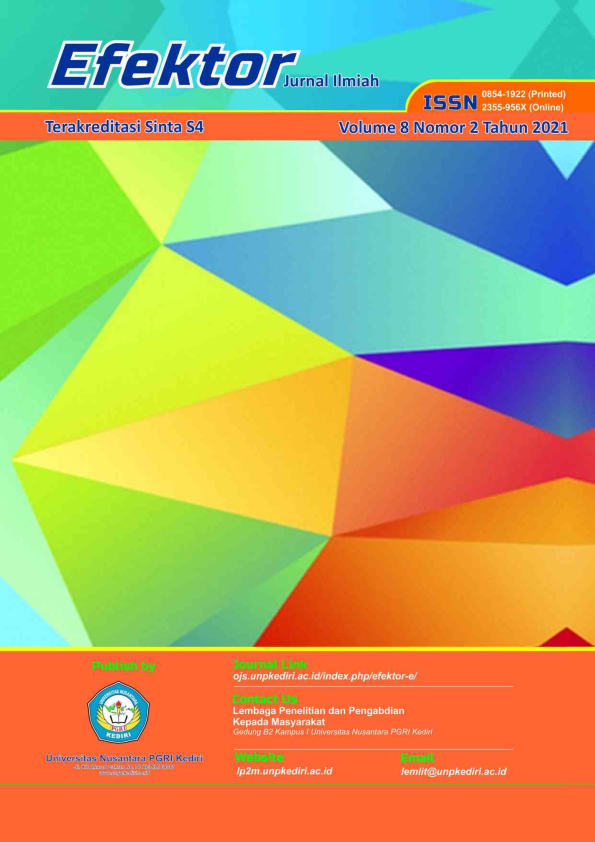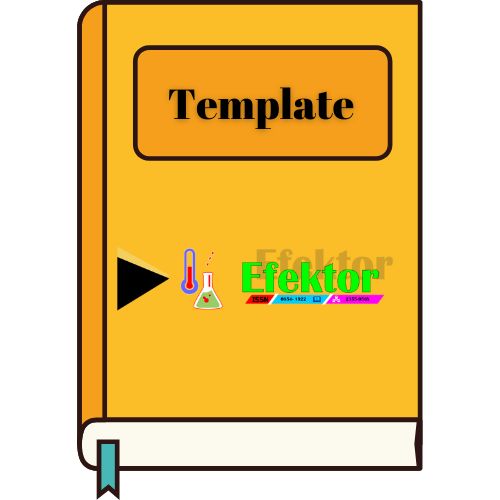Problem Solving Ability and Mathematical Disposition on Cube and Block Material in terms of Mathematical Ability
DOI:
https://doi.org/10.29407/e.v8i2.15984Keywords:
Problem solving skill, Cubes and Blocks, Mathematical Disposition, mathematical skillsAbstract
This research is motivated by the importance of problem-solving abilities and mathematical dispositions on cube and block material in terms of mathematical abilities. Where the objectives of learning mathematics contain cognitive aspects seen from problem-solving abilities and affective aspects which can be seen from mathematical dispositions. The purpose of this study was to describe problem solving abilities and mathematical dispositions, as well as the relationship between the two in the cube and block material in terms of mathematical abilities. This research was conducted at SMP Pawyatan Daha 2 Kediri City with the research subjects of class IX. The approach used is a qualitative approach. Data were collected by giving test questions of problem-solving abilities, giving mathematical disposition questionnaires, and interviews based on the results of test questions by each subject. The conclusions of the results of this study are (1) The problem-solving ability of students is generally in quite good criteria (2 Students' mathematical disposition is generally in good criteria, and (3) There is no significant relationship between problem-solving abilities and mathematical dispositions.
References
Arikunto, Suharsimi. (2010). Dasar–Dasar Evaluasi Pendidikan (Edisi Revisi). Jakarta: Bumi Aksara.
Gunawan, Imam. (2015). Metode Penelitian Kualitatif Teori dan Praktek. Jakarta: Bumi Aksara.
Hendriana, H., Rohaeti, E.E., & Sumarmo, U. (2017). Hard Skills dan Soft Skill Matematik Siswa. Bandung: Refika Aditama.
Kemendikbud. (2014). Konsep dan Implementasi Kurikulum 2013. https://www.kemdikbud.go.id/kemdikbud/dokumen/Paparan/Paparan%20Wamendik.pdf. Diakses Januari 2021.
Mahmudi, Ali. (2010). Tinjauan Asosiasi antara Kemampuan Pemecahan Masalah Matematis dan Disposisi Matematis. Makalah disajikan pada seminar nasional pendidikan matematika FMIPA Universitas Negeri Yogyakarta : Yogyakarta, 17 April 2010.
NCTM (National Council of Teachers of Mathematics). (1991). Professional Standards for Teaching Mathematics. Evaluation of Teaching: Standard 6: promoting Mathematical Disposition. Reston, VA: Author.
NCTM (National Council of Teachers of Mathematics). (2000). Principles and Standards for School Mathematics. Reston, VA: Author.
Polya. G. (1973). How to Solve It: A New Aspect of Mathematichal Method (Seconded). New Jersey: Princeton University Press.
Riduwan. (2015) Belajar Mudah Penelitian untuk Guru-Karyawan dan Peneliti Pemula. Bandung : Alfabeta.
Saad, N.S. & Ghani, A.S. (2008). Teaching mathematics in Secondary Scholl Theories and Practices. Perak : Universiti Pendidikan Sultran Idris.
Sugiono. (2015). Metode Penelitian Kuantitatif, Kualitatif, dan R&D. Bandung: Alfabeta.
Sumarmo, Utari., Hidayat, W., Zulkarnaen, R., Hamidah, Sariningsih, R. (2012). Kemampuan dan Disposisi Berpikir Logis, Kritis, dan Kreatif Matematik (Eksperimen terhadap Siswa SMA Menggunakan Pembelajaran Berbasis Masalah dan Strategi Think-Talk-Write). Bandung: Jurnal FMIPA UPI.
Wardani, S. (2009). Meningkatkan Kemampuan Berpikir Kreatif dan Disposisi Matematik Siswa SMA Melalui Pembelajaran dengan Pendekatan Model Sylver. Bandung: Disertasi Program Pascasarjana UPI.
Downloads
Published
Issue
Section
License
Authors who publish with this journal agree to the following terms:
- Copyright on any article is retained by the author(s).
- The author grants the journal, the right of first publication with the work simultaneously licensed under a Creative Commons Attribution License that allows others to share the work with an acknowledgment of the work’s authorship and initial publication in this journal.
- Authors are able to enter into separate, additional contractual arrangements for the non-exclusive distribution of the journal’s published version of the work (e.g., post it to an institutional repository or publish it in a book), with an acknowledgment of its initial publication in this journal.
- Authors are permitted and encouraged to post their work online (e.g., in institutional repositories or on their website) prior to and during the submission process, as it can lead to productive exchanges, as well as earlier and greater citation of published work.
- The article and any associated published material is distributed under the Creative Commons Attribution-ShareAlike 4.0 International License













